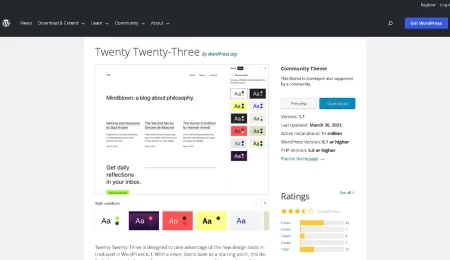The User Role Editor plugin for WordPress
User Role Editor: Are you struggling to manage the user roles on your WordPress site? Do you find it difficult to control who has access to what? If so, you’re not alone. Luckily, there’s a solution – the User Role Editor plugin for WordPress. In this article, we’ll explore what this plugin is, how it works, and why you should consider using it on your website.
Introduction
Managing user roles on a WordPress site can be a daunting task, especially if you have a lot of users or complex user permissions. By default, WordPress comes with a few pre-defined user roles, such as administrator, editor, author, and contributor. However, these roles may not be sufficient for your needs, and customizing them can be a challenging task. That’s where the UserRole Editor plugin comes in.
What is the User Role Editor Plugin?
The User Role Editor plugin is a free WordPress plugin that allows you to customize the user roles and permissions on your website. With this plugin, you can create new user roles, modify existing ones, and assign specific permissions to each role. This can be especially useful if you have a complex site with multiple users, each with different levels of access.
Installing and Using the User Role Editor Plugin
Installing the User Role Editor plugin is simple. You can download it from the official WordPress plugin repository, or you can search for it from your WordPress dashboard under Plugins > Add New.
Once installed and activated, you can access the plugin’s settings from the Users menu in your WordPress dashboard. From there, you can create new roles, modify existing ones, and assign capabilities to each role.
Creating New User Roles
One of the most useful features of the User Role Editor plugin is the ability to create new user roles. To do this, simply click on the “Add Role” button in the plugin’s settings. You can then give the role a name, a description, and assign it specific capabilities. This can be especially useful if you have specific user groups that require different levels of access.
Modifying Existing User Roles
In addition to creating new roles, you can also modify existing ones. For example, if you want to restrict an editor’s access to certain parts of your site, you can use the User Role Editor plugin to remove specific capabilities from their role. This can help you to fine-tune your user permissions and ensure that each user has access to only what they need.
Assigning Capabilities to User Roles
The User Role Editor plugin allows you to assign specific capabilities to each user role. Capabilities are essentially permissions that determine what a user can and cannot do on your site. By default, WordPress comes with a set of predefined capabilities, such as “publish_posts,” “edit_pages,” and “manage_options.” However, with the UserRole Editor plugin, you can create your own custom capabilities and assign them to specific roles.
The recommended guidelines for using the User Role Editor plugin include:
- Familiarizing yourself with WordPress user roles and capabilities before using the plugin
- Making sure to regularly back up your site before making any changes with the plugin
- Understanding that incorrect use of the plugin can lead to security issues or unintended consequences
People are using the User Role Editor plugin to:
- Customize user roles and capabilities to fit their specific needs
- Easily manage user access to different parts of their WordPress site
- Streamline their user management process
The reviews of the UserRole Editor plugin are generally positive, with users praising its ease of use and the level of control it gives them over user roles and capabilities. However, some users have reported encountering compatibility issues with certain themes or plugins, so it is always recommended to thoroughly test any changes made with the plugin on a staging site before applying them to a live site.
User Role Editor Plugin Features
The User Role Editor plugin offers a variety of features to help you manage user roles and permissions on your website, such as:
Custom User Role Creation
The plugin allows you to create custom user roles according to your specific needs. You can assign different capabilities to each user role, depending on the tasks you want them to perform. You can also set restrictions on what users can access and what they cannot.
Role Capabilities Management
The User Role Editor plugin enables you to modify the capabilities of existing user roles, such as Administrator, Editor, and Author. You can add or remove capabilities as per your requirements. This feature can come in handy when you want to restrict certain actions of a user role or give additional permissions.
Post and Page Permissions
You can set specific post and page permissions for each user role. For example, you can allow a user role to create new posts but not delete them. Or, you can restrict access to certain pages or posts for a particular user role.
WooCommerce Integration
The User Role Editor plugin is compatible with WooCommerce, the most popular eCommerce plugin for WordPress. It allows you to manage user roles for WooCommerce, enabling you to restrict access to specific products or categories.
Benefits of using User Role Editor Plugin
The User Role Editor plugin offers numerous benefits to website owners, such as:
Enhanced Security
By customizing user roles and permissions, you can increase the security of your website. For instance, you can limit the actions of a user role to prevent any unauthorized access or data breaches.
Improved User Management
The User Role Editor plugin enables you to manage users more efficiently. You can create user roles that match your organizational structure, and assign specific capabilities to each role. This feature saves time and eliminates the need for manual user management.
Flexible Website Management
With the User Role Editor plugin, you can create a flexible website management system that suits your business needs. You can set different permissions for different user roles, and restrict access to certain areas of your website. This allows you to delegate tasks effectively and focus on other important aspects of your business.
Better User Experience
By using the User Role Editor plugin, you can create a better user experience for your website visitors. By restricting access to certain areas of your website, you can prevent accidental data deletion or modifications. This helps in building trust with your customers and ensures a smooth user experience.
How to install and activate User Role Editor Plugin
Installing and activating the User Role Editor plugin is easy and straightforward. Here’s how you can do it:
- Log in to your WordPress dashboard and go to “Plugins” from the left sidebar.
- Click on “Add New” and search for “UserRole Editor” in the search bar.
- Click on “Install Now” next to the UserRole Editor plugin.
- Once the plugin is installed, click on “Activate” to activate it on your website.
How to use User Role Editor Plugin
Once you have installed and activated the User Role Editor plugin, you can start creating and managing custom user roles. Here’s how you can use the plugin:
Creating Custom User Roles
To create a custom user role, follow these steps:
- Go to “Users” from the left sidebar and click on “User Role Editor.”
- Click on “Add Role” at the top of the page.
- Enter a name for your custom user role and click on “Add Role” again.
- Customize the capabilities of your new user role by checking or unchecking the boxes next to each capability.
Editing Existing User Roles
To edit an existing user role, follow these steps:
- Go to “Users” from the left sidebar and click on “User Role Editor.”
- Select the user role you want to edit from the list of roles.
- Modify the capabilities of the user role by checking or unchecking the boxes next to each capability.
Deleting User Roles
To delete a user role, follow these steps:
- Go to “Users” from the left sidebar and click on “User Role Editor.”
- Select the user role you want to delete from the list of roles.
- Click on “Delete” at the bottom of the page.
User Role Editor Plugin vs. Other User Management Plugins
While there are other user management plugins available for WordPress, the UserRole Editor plugin stands out due to its simplicity and ease of use. Unlike other complex user management plugins, the User Role Editor plugin provides a straightforward solution for creating and managing custom user roles. It also has a clean and intuitive user interface, making it easy for anyone to use.
Pro Version
The User Role Editor Pro is a premium version of the UserRole Editor plugin for WordPress. It offers additional features and functionality compared to the free version. Some of the key features of the User Role Editor Pro include:
- Multisite Network Support: The Pro version includes support for WordPress multisite networks, allowing administrators to manage user roles and capabilities across multiple sites from a single interface.
- Custom Role Capabilities: The Pro version allows administrators to create custom capabilities, beyond the standard WordPress capabilities, to further refine user role permissions.
- Custom Post Type Support: The Pro version includes support for custom post types, allowing administrators to manage user role permissions for these post types as well.
- Role Inheritance: The Pro version includes the ability to create role inheritance, where one user role can inherit the capabilities of another user role, making it easier to manage user permissions.
- Advanced Capability Management: The Pro version includes advanced capability management features, such as the ability to bulk edit capabilities and the ability to search for specific capabilities.
- Enhanced Security: The Pro version includes additional security features, such as the ability to assign user roles with elevated capabilities only to specific users, helping to prevent unauthorized access.
- Priority Support: The Pro version includes priority support from the plugin developers, providing users with a higher level of assistance and faster resolution of any issues that may arise.
The User Role Editor Pro provides additional features and functionality compared to the free version, making it a good option for users who need more advanced user role and capability management capabilities on their WordPress site.
Conclusion
In conclusion, the User Role Editor plugin is a powerful and user-friendly solution for managing custom user roles on your WordPress website. By using this plugin, you can create a flexible user management system that meets your business needs, improves website security, and provides a better user experience. With its intuitive interface and extensive customization options, the User Role Editor plugin is an essential tool for any website owner or administrator looking to take control of their website’s user roles and permissions.
FAQs
- Is the UserRole Editor plugin free to use? Yes, the UserRole Editor plugin is entirely free to use. However, there is a premium version available with additional features.
- Can I create unlimited custom user roles with the UserRole Editor plugin? Yes, there is no limit to the number of custom user roles you can create with the plugin.
- Can I restrict access to specific pages or posts with the UserRole Editor plugin? Yes, the plugin allows you to set specific post and page permissions for each user role.
- Is the UserRole Editor plugin compatible with WooCommerce? Yes, the UserRole Editor plugin is compatible with WooCommerce, enabling you to manage user roles for WooCommerce.
- Can I use the UserRole Editor plugin with other user management plugins? While it is possible to use the UserRole Editor plugin with other user management plugins, it is not recommended as it may cause conflicts and unexpected behavior. It is best to use the UserRole Editor plugin as a standalone solution for managing user roles on your website.




Leave a Comment